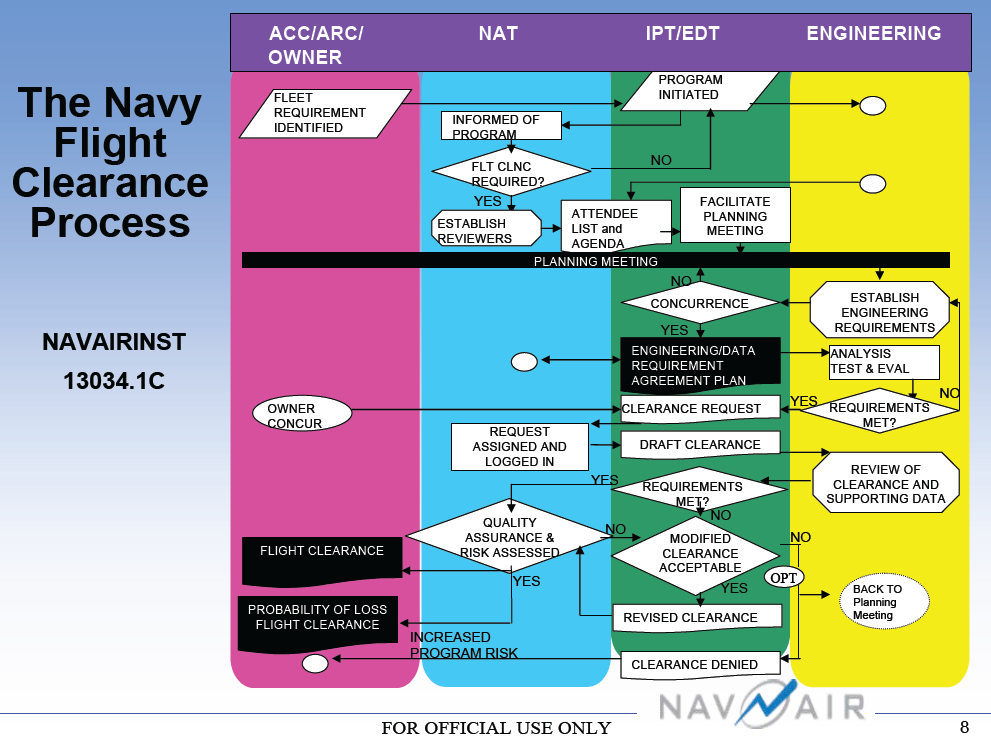NTSB UAS Conference
- Pete Heasley
- 13 pages
- For Official Use Only
- April 30, 2008
The Navy’s Airworthiness Office (AIR-4.0P) is responsible for the independent engineering assessment of all aircraft (manned and unmanned) and airborne weapon systems to ensure these air vehicles can be operated safely within defined operating limits.
•U.S.C. Title X, Chapter 503, Section 5013, Secretary of the Navy
•SECNAVINST 5400.15B
•CNO has delegated the authority to COMNAVAIRSYSCOM (AIR-00) to issue flight clearances for all Navy/Marine Corps Manned and Unmanned aircraft via the following:
–For NATOPS: IAW OPNAVINST 3710.7T
–For NATIP/TACMAN: IAW OPNAVINST 3510.15
–For Interim Flight Clearances (IFC): IAW 3710.7T
•These Flight Clearances are issued IAW NAVAIRINST 13034.1C
…
…
UAS
•In general, a flight clearance is required for any Navy/USMC-owned or Navy/USMC-leased UAS or aerial target IAW OPNAVINST 3710.7T
•UAS IFCsbroken down into two major categories (Standard Airworthiness IFCand Safety of Flight IFC).
•Engineering requirements are tailored based on system complexity, desired usage, expendability, etc. External mitigations (e.g., airspace restrictions) are typically added to the IFC to alleviate/limit risk to third parties
•Not all UAS have to be airworthy, but all must be safe for flight!(expendable UA may not have to be airworthy to same threshold commonly associated with non-expendable UAS or manned aircraft)
•If probability of loss is in line with expendabilityof the UAS, and the level of risk associated with personnel, property, equipment, and environment has been identified and accepted by appropriate authorities, a “safety of flight”(SOF) IFC can be granted
…




